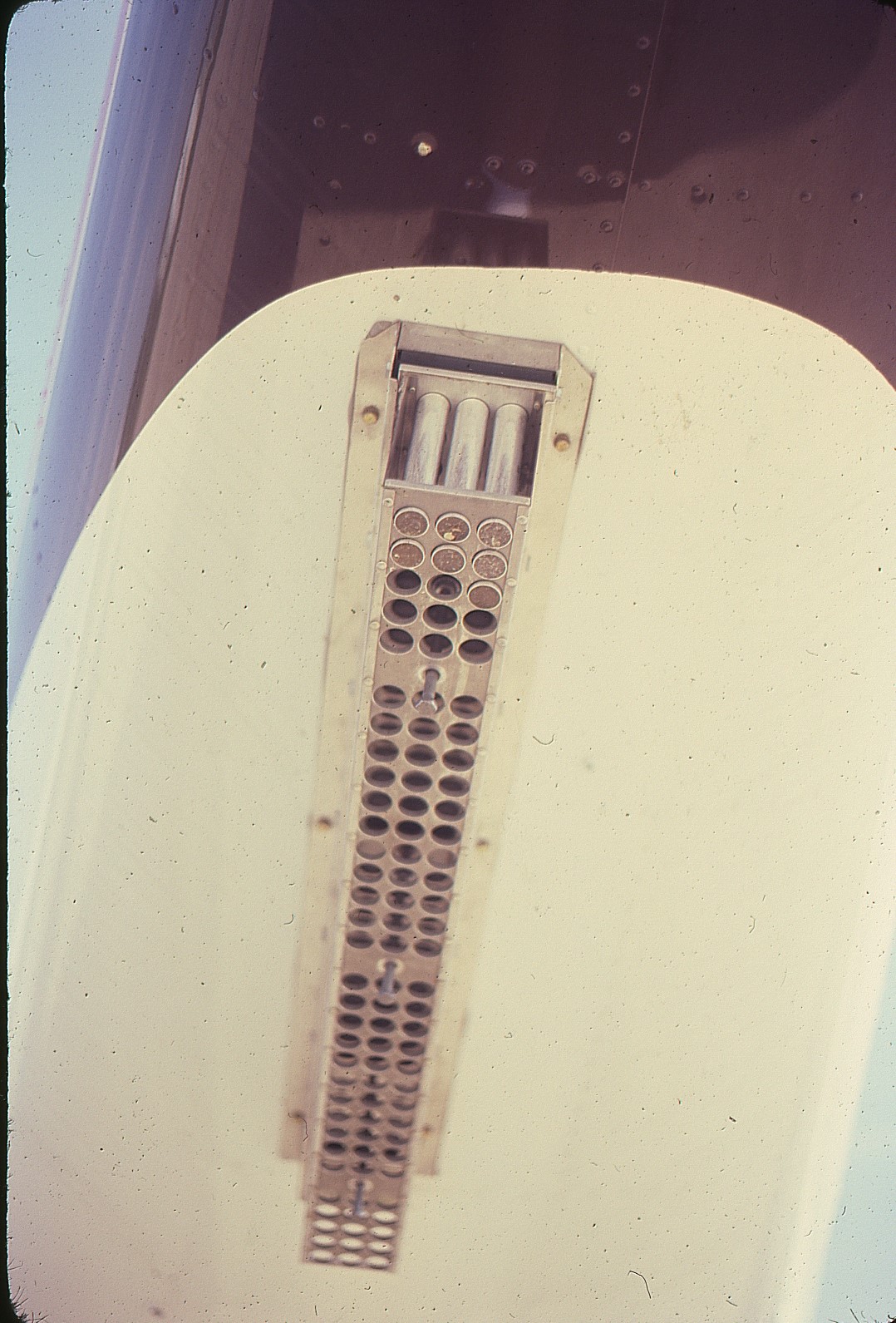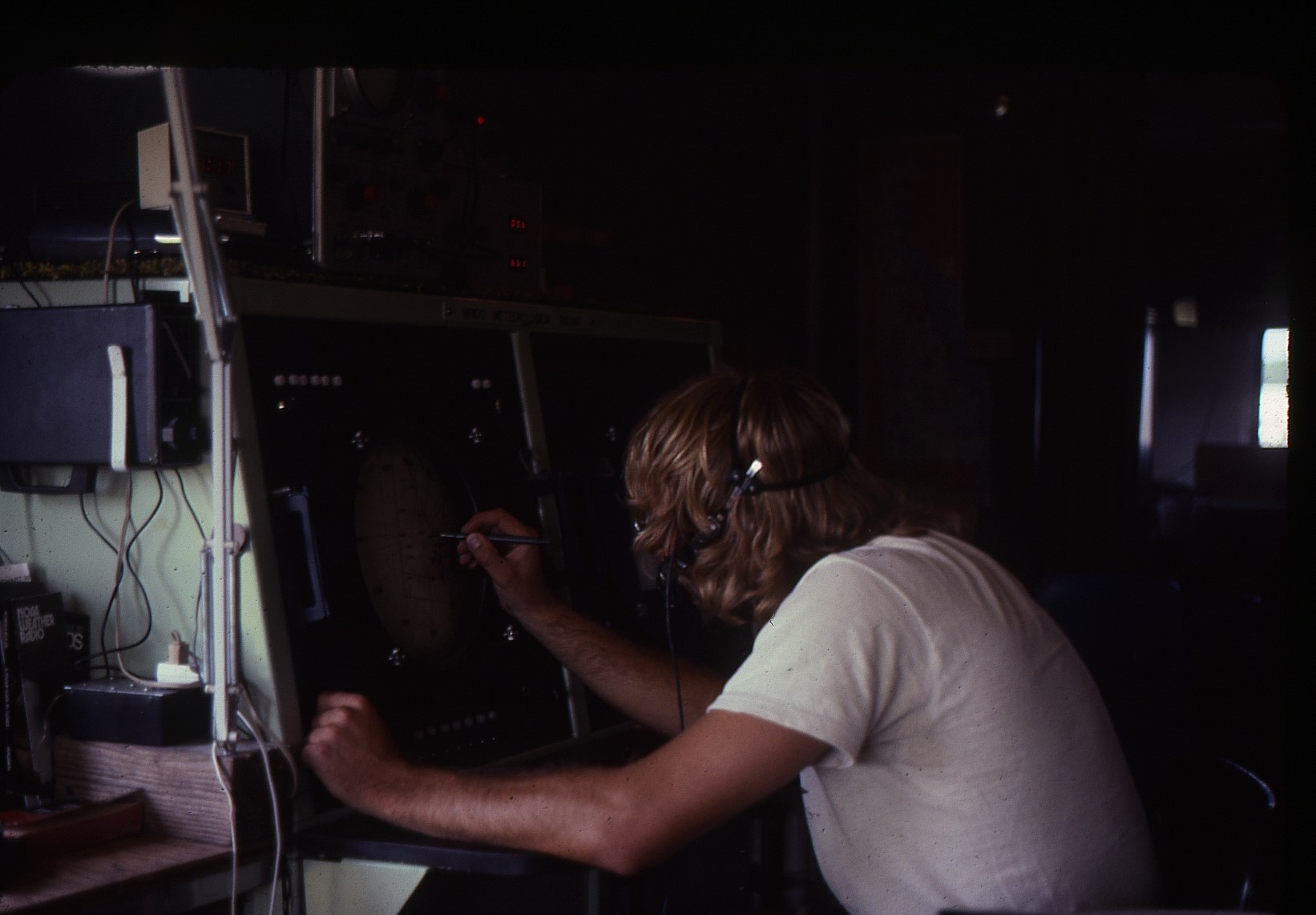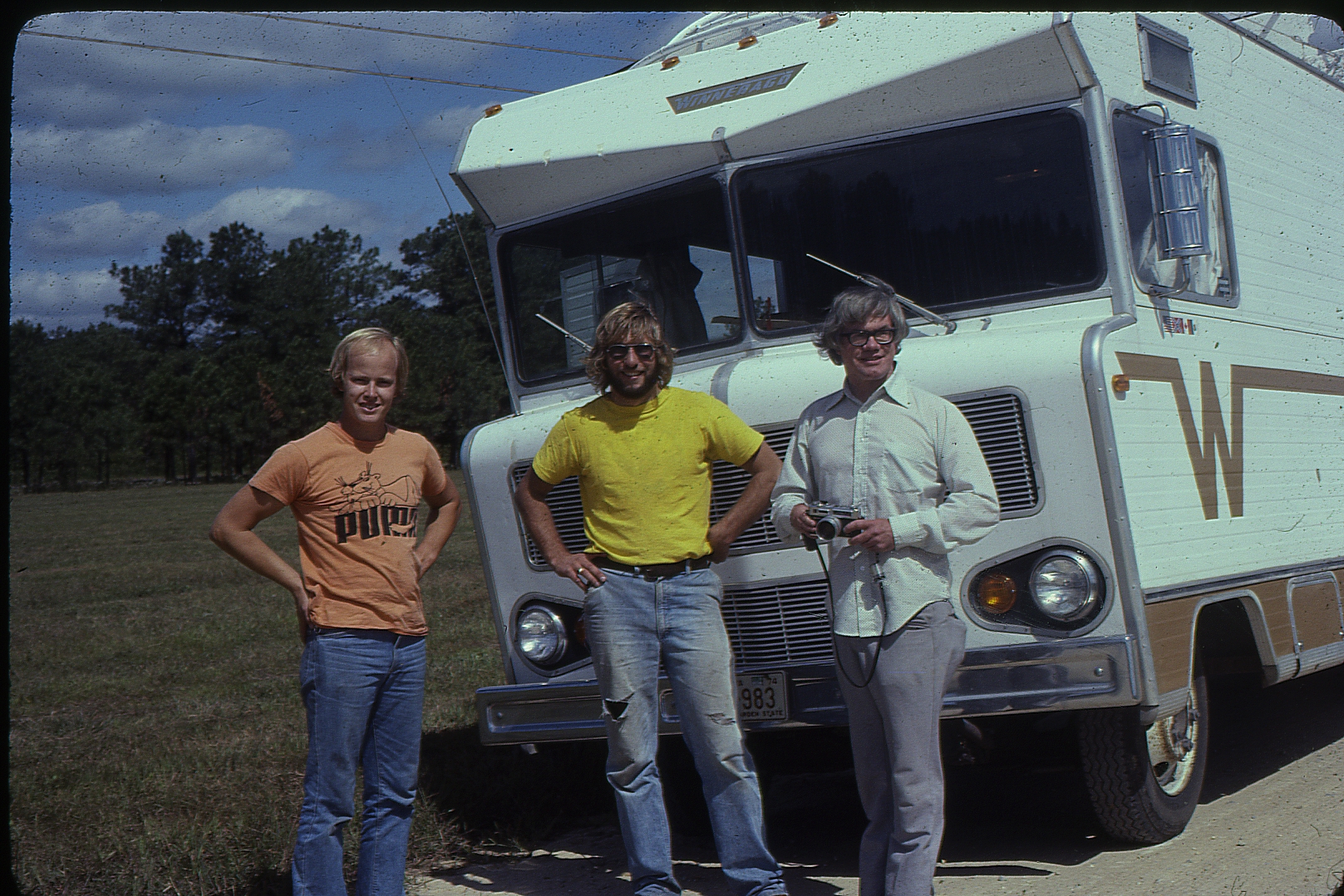

The twin-engine (each 310 hp Turbocharged Lycoming TI0-540A) Piper Navajo was used to fly into developing cumulus clouds and seed them with silver iodide crystals (AgI). The gross weight of the plane is 6,500 lbs. The wing span is 40.67 feet, the length of the plane 32.63 feet. The maximum speed of the plane at 15,500 feet is 226 kts ($\approx$ 250 mph). Normal climb to seeding altitude of 16,000 - 20,000 feet required between 20 to 25 minutes.


The silver iodide was deployed in aluminum tube flare cartridges similar to shotgun shells. Each flare cartridge contained 20 grams of silver iodide. The shells were mounted in a 3 x 32 array carriage attached to the under-side of the air plane, as shown in the figure to the left.
The photo on the right is of the ice crystal counter also attached to the under-side of the air plane. The pilot would make an initial pass through the target cloud to measure the ice crystal density in the cloud prior to releasing silver iodide. Silver iodide is injected into the cloud on the second pass. and a third pass through the cloud is made to measure the ice crystal density after the release of silver iodide as a way of measuring the efficacy of the seeding process.

Ground radar station was used to track and monitor cells and the plane's location relative to cell location (horizontally and vertically). The radar signal is sent and received by the dish structure. The plane's location was tracked by the transponder located below the radar dish.

Atmospheric data was collected, charted, organized and displayed on a daily basis. The project meteorologist would declare the day to be either a "go" or "no go" depending on the probability of thunderstorm development.

The project meteorologist monitored the radar screen to track cell development, structure and movement. Once the seeding plane is airborne, its position was indicated on the screen so that the meteorologist could guide the plane to potentially good cells for seeding with silver iodide crystals. The meteorologist would also record cell size and depth before and after seeding as a means of verifying seed efficacy.

The project personnel from left-to-right:
Publicity:
State News Article